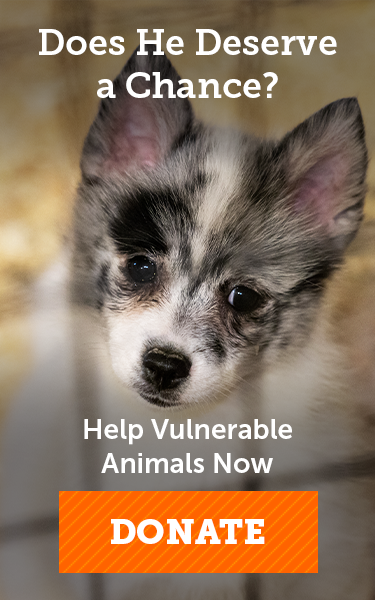
Advanced Veterinary Procedure Saves Beloved Dog’s Legs at ASPCA Animal Hospital

Thanks to the expertise of veterinarians at the ASPCA Animal Hospital (AAH), a nine-month-old pit bull named Hugo is happy and healthy in his Long Island home after being struck by a van in April.
When the back door to Sara L.’s family’s house opened one afternoon, Hugo darted out the door and into the street. He was immediately struck, which smashed his left hind leg into the asphalt as the driver screeched to a halt. Seconds later, Hugo leapt up and fled back toward the house, bleeding and yelping. Sara and her mother, Gloria, rushed Hugo to a local veterinary clinic, which referred them to AAH. An advanced veterinary procedure conducted there can be credited for Hugo’s subsequent recovery.
First, ASPCA veterinarians examined Hugo and took X-rays. “The bones and tendons inside his left ankle joint were just gone,” recalled Dr. J’Mai Gayle, Director of Surgery, who also noted that Hugo’s right hind leg had severe skin wounds.
“We considered amputating his left leg but hesitated because of the severity of the right hind leg wounds,” Dr. Gayle continued. “We wanted Hugo to eventually have four legs to walk on.” She determined that an external fixator—an apparatus that stabilizes the joint while allowing daily wound care—was the best option for Hugo.
Doctors then began the three-hour surgery by removing contaminated tissue and cartilage from the dog’s injured joint. Then they applied the external fixator by placing pins through the bones surrounding the joint and connecting the pins to external bars to prevent movement. Although the end result looked like metal scaffolding over Hugo’s leg, it provided necessary stability for the soft tissue to heal while new, solid bone grew across the joint.
Since the fixator’s bolts pierced Hugo’s skin, it was crucial for him to receive regular cleaning and bandage changes to prevent infection. His family made frequent trips from their Long Island home to AAH, where Hugo, with his loving looks and indefatigable nature, soon became a staff favorite.
“I know his bandage changes were often somewhat uncomfortable, but Hugo was always a good boy, giving us wags and licks,” said Jennifer Doyle, Senior Veterinary Technician. “His exuberant personality is infectious.”
“He was always such a happy boy,” said Senior Vet Tech Michaelene Albert. “It’s obvious in the huge smile Hugo has for us every time he comes in.”
The family managed to keep Hugo’s E-collar on most of the time, although Hugo made several successful attempts to remove it. They used a crate to help keep him still—Sara’s Seven-year-old brother, David would crawl in with him to keep him company—and rewarded Hugo with his favorite treats. Sara notes that Hugo now has his own bed in the living room, and “is very happy.”
Keeping Hugo safely in his home was always as much a priority as keeping him alive, explained Dr. Gayle. “This was a very rewarding case for many reasons, but being able to save Hugo and keep him with his family was the best part,” she said.
